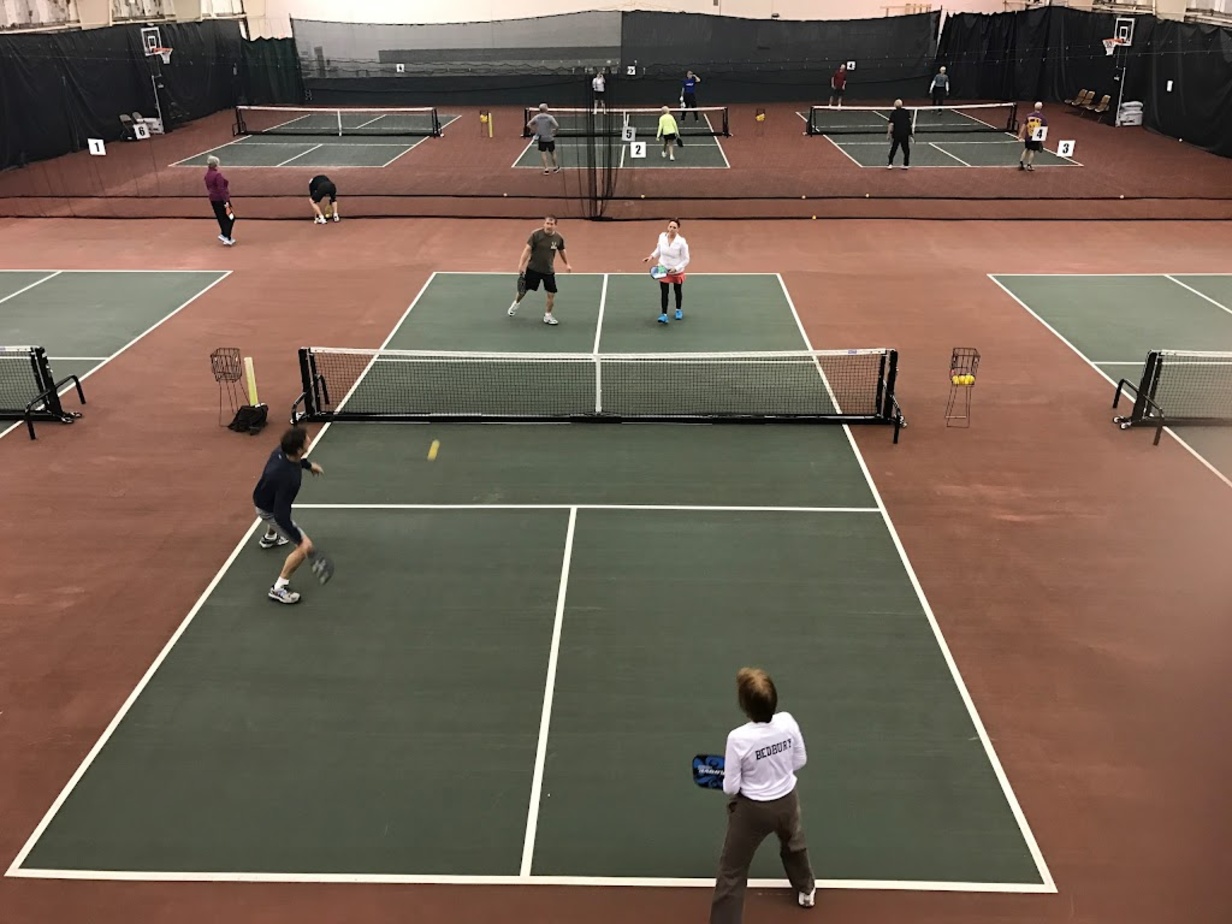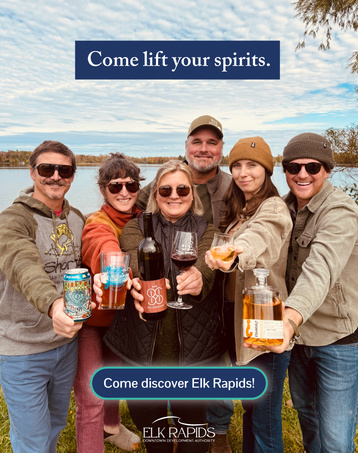
In A Pickle: How Pickleball's Local Popularity Is Outgrowing Available Facilities
By Craig Manning | Dec. 19, 2021
It’s one of the buzziest sports in the country, but pickleball is underserved in Traverse City. So say the local players and proponents of the sport, a hybrid game that combines elements of tennis, badminton, and ping-pong. It’s a problem that could come to a head this winter, as cold and snowy weather descends upon northern Michigan and takes most of the area’s pickleball courts with it.
Conceived in the 1960s as a backyard game for kids, pickleball has recently spiked in popularity, becoming a common fixture at public parks, health clubs, YMCA facilities, and retirement communities. In January, The Economist called it “the fastest-growing sport in America"
According to the Traverse Area Pickleball Association (TAPA), the sport’s presence in Traverse City dates back to at least 1985. That year, members of the Grand Traverse Yacht Club “discovered the game being played at the home of a friend located on nearby Torch Lake,” deemed it “an outdoor summer alternative to racquetball,” and advocated to have the Yacht Club build a dedicated pickleball court – northern Michigan’s first.
Still, pickleball didn’t gain a true foothold in Traverse City until the 2000s, when the Grand Traverse Bay YMCA started making courts available for the sport. Growing interest and demand throughout the latter half of that decade inspired the establishment of TAPA.
“We formed TAPA in 2010 or 2011, and set it up as a nonprofit organization intended to facilitate the growth of pickleball in northern Michigan,” explains Gary Ford, the organization’s president. “When we first formed TAPA, the only place to play pickleball in northern Michigan was at the YMCA, or on some outdoor courts along the Boardman River. That was really it.”
Forming TAPA, Ford tells The Ticker, allowed local pickleball enthusiasts to do two things. First, since the organization was formed as a 501c3 nonprofit, supporters could make tax deductible contributions to help grow the sport locally. Second, TAPA was able to start hosting competitive pickleball tournaments in northern Michigan, which Ford says increased local interest in the sport.
The expanding pickleball contingent in Traverse City gave TAPA some clout, which came in handy when the Grand Traverse Bay YMCA opened its newest facility on Silver Lake Road in 2014. With fewer operations centered at the location now known as YMCA South – on Racquet Club Drive, across from Logan’s Landing – TAPA was able to convince the Y to convert several more tennis courts at that facility into pickleball courts.
The six dedicated courts at YMCA South remain some of the only true indoor pickleball courts in Traverse City – though Ford notes that the South Y can add four more by “taking up the all-sports flooring that they use for volleyball.” TAPA has helped fund other courts since – including eight at the Boardman Valley Nature Preserve in 2018, and eight more at Veteran’s Park in Slabtown (better known as “the Dog Park”) the following year. But those courts – as well as three at Grace Macdonald Park, two at Herman Park in Suttons Bay, and three at Glen Arbor Township Park – are all outdoors.
With interest in pickleball growing so fast, the region’s few indoor courts might not be enough to support the sport’s local fanbase this winter.
“The sport has outgrown the facilities by a long shot,” says Dan Fouch, a local pickleball enthusiast who plays the sport five times a week. “There are six indoor courts available at the South Y, and that’s really all the courts that are available in the area [during the winter]. If you go there in the morning, you’ll see 20-25 people just waiting to get on a court.”
Fouch expects the growth of pickleball to continue. He and his wife, both long-time tennis players, have mostly switched over to pickleball – in part because the mechanics of the game make it “easier on your shoulders, easier on your knees, and easier on your ankles.” Those factors render pickleball more forgiving for older players, but Fouch thinks that the faster play and more forgiving learning curve of the game (compared to tennis) are bringing younger people into the fold, too.
“The thing with tennis is, unless you're really good, you spend a lot of time chasing down balls or double-faulting,” Fouch notes. “Tennis is a more technically sophisticated game, where with pickleball, anybody can have fun with it. You see people 10 years old, and people 80 years old, and they can all have fun with the game.”
So, how can Traverse City add more indoor pickleball courts to keep pace with demand? TAPA is considering multiple strategies – one of which would involve building a brand-new indoor pickleball facility.
“But there are some challenges to doing that,” Ford admits. “The big one is that most people are not going to play indoors during the summer. Because all the best courts are outdoor courts, and they're free to play on. So, if you build an indoor facility, you can't really count on high volume of play from May through September.”
A better solution, Ford thinks, is adding pickleball to more existing athletic facilities throughout town. Ford has had talks with Grand Traverse Resort and Spa – which currently has three pickleball courts available to rent for hotel guests and health club members – about “increasing their pickleball offerings.” He also believes pickleball will be a top priority if/when the YMCA expands its Silver Lake Road facility.
When asked whether Grand Traverse Bay YMCA is eyeing expansion of the YMCA West facility any time soon, President and CEO Andy Page confirms that the organization is “constantly evaluating and investigating” the possibility.
“We continue to see growth in just about all areas,” Page says. “We've seen growth in membership, growth in the programs that we provide, growth in overall usage in our facilities. And as we look at our usage going up, it's very clear to us that we're going to need to have some very concentrated conversations here, in the very near future, about how we meet that growth.”
Page hints that, when those expansions do happen, pickleball’s increasingly all-ages appeal could make it a prime candidate or more dedicated space.
“[Serving all ages] is a big part of what the Y is about,” Page says. “We have kids as young as six months old getting swim lessons, and people in their 90s playing pickleball. So pickleball, by its demographic and by its usage, is reflective of what the Y stands for. We are definitely excited about the growth.”
Comment






